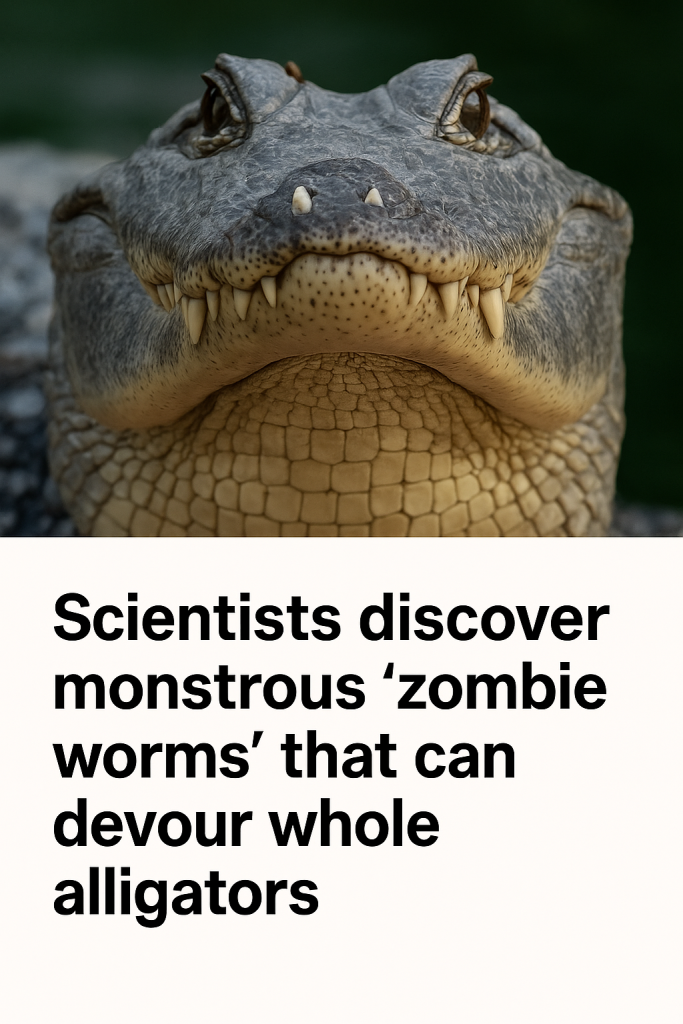For those who believe the deep ocean is merely a mysterious but distant wilderness, recent discoveries may drastically change that perception—and instill a new fear of the dark depths lurking beneath. In 2024, marine biologists have uncovered a terrifying new chapter in the underwater ecosystem: monstrous “zombie worms” capable of consuming entire alligator carcasses, leaving no trace of bones behind.
These eerie creatures, scientifically known as Osedax worms, have long fascinated researchers because of their unusual feeding habits. Traditionally recognized for decomposing whale bones on the ocean floor, new research has now revealed that some species have adapted to feast on a broader range of large vertebrate remains—including the formidable crocodilian carcasses that sometimes sink into deep marine environments.
What makes these “zombie worms” particularly chilling is not just their ability to strip flesh but their remarkable biology. Unlike typical scavengers, Osedax worms lack mouths and stomachs. Instead, they rely on symbiotic bacteria housed within root-like structures that penetrate animal bones, breaking down their calcium phosphate matrix to access the nutrients trapped inside.
Recent expeditions employing remote-operated vehicles (ROVs) and deep-sea submersibles have documented the aftermath of alligators and crocodiles that have met their end in marine habitats. The carcasses, which would traditionally take months or years to decompose fully, were found skeletonized within weeks, with Osedax worms populating the bones in dense colonies.
“It’s a staggering sight,” one marine scientist described. “To witness these colonies of translucent worms effectively eradicating large, prehistoric-seeming creatures like alligators, it really challenges our understanding of deep-sea ecological dynamics.”
The implications extend beyond mere curiosity. This discovery highlights an often-overlooked dimension of oceanic nutrient recycling that could influence models of carbon cycling and ecosystem balances in deep marine zones.
Moreover, the ability of Osedax worms to colonize non-whale vertebrate remains suggests these worms are more ecologically versatile than previously thought, raising questions about their evolutionary pathways and adaptations to deep-sea survival.
For the casual ocean observer, the realization that such grotesque “zombie worms” lurk in the abyss adds a layer of unease—and fascination—to thoughts of the deep sea. The image of giant crocodilian skeletons systematically devoured by seemingly otherworldly worms is a reminder that Earth’s oceans still hold many frightening secrets.
As this research continues, scientists emphasize the importance of respecting deep ocean environments, which play critical roles in Earth’s overall health. These newfound oceanic decomposers exemplify how alien life can be beneath the waves—far from sunlight, in extreme pressures, thriving on the dead in a relentless cycle that maintains oceanic ecosystems.
So for anyone who has ever doubted the dangers or mysteries of the deep ocean, the monstrous “zombie worms” are here to change your mind—and perhaps provoke a healthy fear of what lies beneath.



